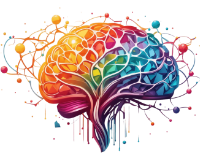Summary: The evolving integration of social-emotional AI into human-centric roles such as therapists and educators underscores a growing divide. While the affluent harness both technology and personal attention, others may increasingly rely on AI solutions due to financial constraints. This disparity raises critical questions about the future of human connection and access.
The Intersection of Social-Emotional AI and Human Roles
The rapid development of social-emotional AI is reshaping roles that traditionally depend on emotional and interpersonal skills. With applications in therapy, education, and coaching, technologies from companies like Vedantu and clare&me are pioneering efforts in this direction. These platforms use AI to analyze engagement and offer AI-driven counseling. However, this technological evolution raises important questions about who benefits most from these advancements.
The Inequitable Access to Technology-Enhanced Services
Technological adoption often skews towards those with financial means who relish both cutting-edge innovations and authentic human interactions. A striking example is seen in a Silicon Valley school, where digital tools are complemented by enhanced human teacher interactions to foster a sense of presence and emotional connection among students. This juxtaposition highlights a significant divide in how technology is integrated into education and service provision.
Human Connection’s Impact on Outcomes
Research consistently demonstrates that positive relationships are integral to successful outcomes in fields like medicine, counseling, and education. Personal care and attention not only bolster health and well-being but also contribute to social goods such as trust and belonging. However, fiscal strategies aimed at reducing labor expenses have strained many professionals, contributing to feelings of depersonalization, alienation, and loneliness.
The Rise of Personal Service Workers for the Affluent
To counteract these pressures, the wealthy increasingly turn to personal service workers, including personal trainers and financial advisors, addressing their needs for personalized attention. Conversely, those with fewer resources may find their access limited to AI solutions. Engineers and developers often market these AI technologies as a satisfactory substitute, particularly for underserved communities unable to access overstretched human services.
Contrasting Uses of AI in Education
The divide becomes more evident when comparing well-resourced experimental educational environments with underfunded school districts. For instance, students in a Mississippi district, faced with a dearth of educators, resorted to learning critical subjects like geometry and science purely through software, absent of any real-time human advisory support. This stark contrast raises questions about the fairness and implications of these differing educational experiences.
Addressing Societal Implications of AI Adoption
While socio-emotional AI companies address concerns over privacy and job displacement, discussions overlooking the restriction of human interaction to those who can afford it remain scant. Technological innovations do not exist in a vacuum; they have profound effects on societal structures, often exacerbating inequalities in human connection and attention. By 2025, it is plausible that affluent individuals may continue to enjoy human-centric services while the rest may largely rely on technological substitutes.
As these trends continue to unfold, it is imperative for stakeholders, including lawyers, doctors, and consultants in Mid-Michigan, to critically examine and address the potential long-term impacts of AI on human connection and equality.
#SocialEmotionalAI #HumanConnection #TechnologicalDisparity #MidMichiganProfessionals #AIInEducation
Featured Image courtesy of Unsplash and imam hassan (i7xJEUGrVyM)
